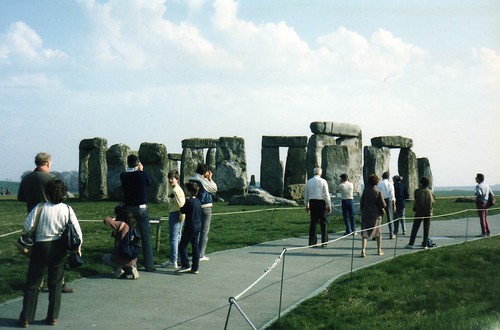A Midsummer Day’s Rant
- By Koji Mukai
- June 20, 2012
- 1 Comment
This year, the summer solstice happens on Wednesday, June 20th, in mainland US, at 7:09 pm Eastern Daylight Time. This is often reported in the news as the beginning of the “official” or “astronomical” summer.
Who decided that seasons begin at equinoxes and solstices, though? Words like “equinox” and “solstices” are technical enough that it makes sense for astronomers to define. For example, the June solstice occurs when the Sun is at its northernmost point as seen from the Earth, whose axis of rotation is tilted by 23.5 degrees. But astronomers don’t have the authority (or the audacity) to define common words like spring and summer.
This reminds me of the controversy about the “demotion” of Pluto, when the International Astronomical Union (IAU) change the classification of Pluto from a “planet” to a “dwarf planet.” In my opinion, it’s the IAU’s prerogative to define the word “planet” as used in research papers and astronomy textbooks. I wouldn’t have a problem, though, if Pluto continues to be called a planet in colloquial English. Think of tomatoes – biologically speaking, a tomato is a fruit, but in common usage, it’s a vegetable, and the US Supreme Court agreed!
There is no question that astronomy and calendar are closely related from the ancient times. Stonehenge is a very visible example that the ancients paid close attention to the solstices (I took that photo of Stonehenge in 1984, I think). This wasn’t just an academic exercise: any agrarian society must be able to estimate the right time of the year to plant crops. In the case of ancient Egypt, this was tied to the annual flooding of the Nile, which they predicted using Sirius. For a couple of months every year, Sirius gets too close to the Sun to be visible. Just before summer solstice in Egypt, which is also right at the start of the annual flooding of the Nile, you can once again observe Sirius rising just before the Sun – this is called the heliacal rising. The Egyptians, and later the Greeks, used the heliacal rising of Sirius as a prominent marker for their calendars.
But what is summer? Nowadays, it almost exclusively means the hottest time of the year. But historically speaking, there was a different definition: summer is the time of the year when the days (daylight hours) are long and the Sun is high in the sky. Spring is the time of year when the day lengthens – that’s the origin of the word “lent” which is the old word for spring, which then became the name for the period leading up to Easter for many Christians. When you don’t have all the modern devices for artificial lighting, you care about the length of the day; farmers always care about this, because this strongly affects the growing season and animal behaviors.
By this definition, summer doesn’t begin on the solstice, it is centered on the solstice. That’s why the summer solstice is also called midsummer, as in the play “A Midsummer Night’s Dream.” Its author, a Mr. William Shakespeare, knew a thing or two about the English language, or so I’m told.
Today, few of us are farmers and most of us have electricity in the house, so we don’t care as much about how long the day is. We do care about how hot it is, though. So I’m not surprised that the old definition of seasons is mostly forgotten. Unfortunately, this amnesia is hurting astronomy education, in my opinion – surveys after surveys show that many college students do not understand the cause of the seasons. The correct answer is the tilt of the Earth rotation axis (and there are a variety of educational resources online about how seasons work, such as this one and this one). But for this to make sense, you need to know about the old definition, that summer is the time of the year when the days are long, the Sun is high in the sky, and the daytime heating is at its maximum. This is the true astronomical definition of summer. And then remind the students that maximum temperature always lags maximum heating (have you ever boiled a pot of water?) – so meteorological summer is delayed by a month or two relative to the true astronomical summer. In the northern hemisphere, we can define meteorological summer to be June through August, or Memorial Day through Labor Day, as many in the US do.
The period from summer solstice to autumnal equinox is even later than the meteorological summer. Call it official summer if you must; but calling it astronomical summer makes no sense, and in fact it is harmful to the public understanding of seasons, I believe.




I think it’s amazing that ancient societies were able to use the stars as a way to predict the seasons. Thank you for sharing this information on ancient Egypt.